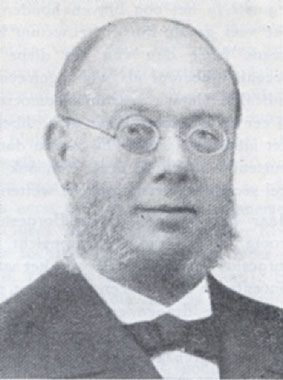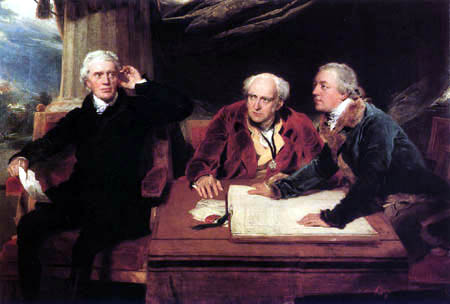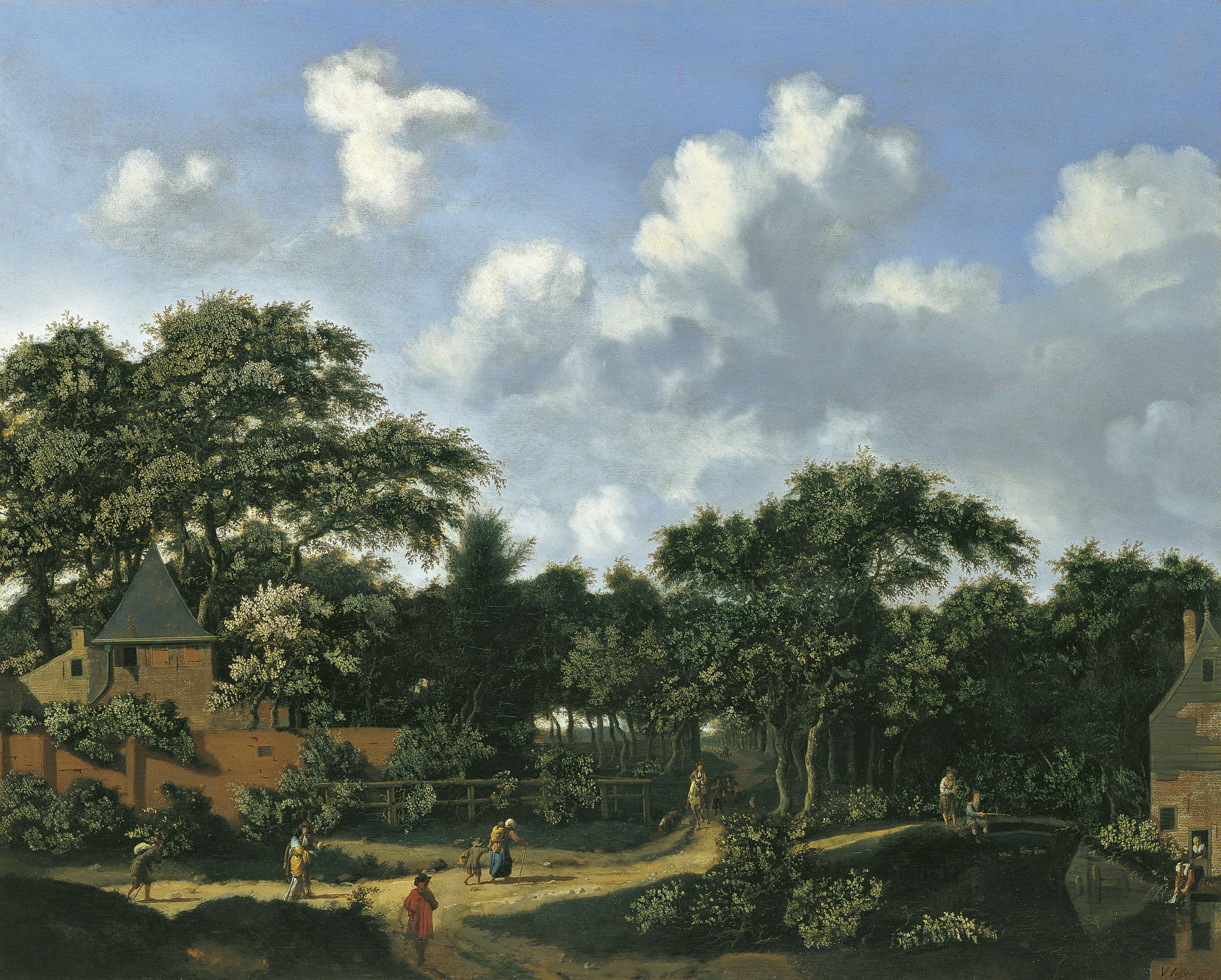|
Elswout
Elswout is a historical buitenplaats (summer residence) dating from the 19th century in a park by the same name in Overveen, Netherlands. History The Elswout site was a buitenplaats for a long time before the current construction began. The original house (of which the structural wall's are incorporated in the current 19th century house) was built by a merchant dealing with Russia, called Carl du Moulin in circa 1633-1635. The design is attributed to Jacob van Campen and Pieter Post. After Du Moulin went bankrupt the estate was sold in 1654 to Gabriel Marcelis, an Amsterdam arms merchant for the King of Denmark, who called the estate 'Elswout' (meaning: Alderwood). Like Du Moulin, he used it as a summer home while selling the sand to be shipped by boat to Amsterdam for construction. In the Frans Hals Museum 17th-century depictions of Elswout by Gerrit Berckheyde and Jan van der Heyden are on display. By removing the sand in the dunes on his property, Gabriel Marselis was able to la ... [...More Info...] [...Related Items...] OR: [Wikipedia] [Google] [Baidu] |
Buitenplaats
A buitenplaats (literally "outside place") was a summer residence for rich townspeople in the Netherlands. During the Dutch Golden Age of the 17th century, many traders and city administrators in Dutch towns became very wealthy. Many of them bought country estates, at first mainly to collect rents, however soon mansions started to be built there, which were used only during the summer. History Buitenplaatsen or buitenhuizen could be found in picturesque regions which were easily accessible from the owner's home in town, and they were near a clean water source. Most wealthy families kept their children in buitenhuizen during the summer to flee the putrid canals of the cities and the accompanying onset of cholera and other diseases. Though most buitenhuizen have been demolished, examples are still in existence along the river Vecht, the river Amstel, the Spaarne in Kennemerland, the river Vliet and in Wassenaar. Some still exist near former lakes (now polders) like the Waterg ... [...More Info...] [...Related Items...] OR: [Wikipedia] [Google] [Baidu] |
Johanna Borski
Johanna Borski (1764–1846), was an influential Dutch banker. She was the director of the "Wed. Borski" bank from 1814 to 1846. In 2022 Borski was in the news with regard to whether her wealth was due to slavery. Biography She was born in Amsterdam to flax merchant Johannes van de Velde and Bruna Jacoba Schouten.Johanna Borski in the DVN She married the banker Willem Borski (1765-1814) on 19 December 1790 and they moved to the house Keizersgracht 566 which they bought in 1809. They had 5 daughters and 3 sons who lived to adulthood. Their summers were spent at their ... [...More Info...] [...Related Items...] OR: [Wikipedia] [Google] [Baidu] |
Egbert Van Drielst
Egbert van Drielst (Groningen, 12 March 1745 – Amsterdam, 4 June 1818) began his study of the painting in a factory in Groningen which produced mainly lacquered objects. He soon went to Haarlem, where he became an apprentice in the wallpaper factory of Jan Augustini. Van Drielst entered the wallpaper studio in Amsterdam where he established friendships with Adriaan de Lelie. He studied the old masters Salomon van Ruysdael, Jacob van Ruisdael, Jan Wijnants and in particular, Meindert Hobbema, and sought to make use of their techniques in his nature studies. In 1768 he became a member of the Guild of Saint Luke in Amsterdam. He often portrayed nature scenes of the Drenthe, in the north-east of the Netherlands. In 1790 he married a girl from Hoogeveen. He traveled there each year to produce drawings, and is sometimes called the "Drentse Hobbema". His wallpaper, usually with the horizon on eye height, can be seen in Elswout, near Haarlem and in the Rijksmuseum Twenthe Th ... [...More Info...] [...Related Items...] OR: [Wikipedia] [Google] [Baidu] |
Rijksmonument
A rijksmonument (, ) is a national heritage site of the Netherlands, listed by the agency Rijksdienst voor het Cultureel Erfgoed (RCE) acting for the Dutch Ministry of Education, Culture and Science. At the end of February 2015, the Netherlands had 61,822 listed national heritage sites, of which approximately 1,500 are listed as archaeological sites. History and criteria Until 2012, a place had to be over 50 years old to be eligible for designation. This criterion expired on 1 January 2012. The current legislation governing the monuments is the ''Monumentenwet van 1988'' ("Monument Law of 1988"). The organization responsible for caring for the monuments, which used to be called ''Monumentenzorg'', was recently renamed, and is now called Rijksdienst voor het Cultureel Erfgoed. In June 2009, the Court of The Hague decided that individual purchasers of buildings that were listed as rijksmonuments would be exempt from paying transfer tax, effective from 1 May 2009. Previously ... [...More Info...] [...Related Items...] OR: [Wikipedia] [Google] [Baidu] |
De Nederlandsche Bank
De Nederlandsche Bank NV (DNB) is the central bank of the Netherlands. Founded by King William I in 1814, it is part of the European System of Central Banks (ESCB). De Nederlandsche Bank is a public limited company ( Dutch: '' naamloze vennootschap'', abbreviated NV) whose everyday policy is overseen by the Governing Board. Being a public limited company, DNB has a Supervisory Board (Dutch: ''Raad van Commissarissen''). In addition, there is an advisory body called the Bank Council (Dutch: ''Bankraad''). As a public entity the DNB has a function as both part of the European System of Central Banks (ESCB) and an independent public body (Dutch: zelfstandig bestuursorgaan). As a part of the ESCB, DNB is co-responsible for the determination and implementation of the monetary policy for the eurozone, besides being a link in the international payment system. As an independent public body, DNB exercises prudential supervision of financial institutions. History On 2 May 1998, the Eu ... [...More Info...] [...Related Items...] OR: [Wikipedia] [Google] [Baidu] |
Hope & Co
Hope & Co. was a Dutch bank that existed for two and a half centuries. The bank was located in Amsterdam until 1795; originally it concentrated on Great Britain. From 1750 it played a major part in the finances of the Dutch East India Company (VOC) through Thomas Hope and his brother Adrian. During the Seven Years' War (1756–1763) the Hope brothers profited from the Netherlands' neutral position and became very wealthy. The Hopes became heavily involved in the Dutch Caribbean, and Danish West Indies. They specialised in plantation loans, in which the entire produce of the plantation was remitted to the lender, who would supervise its sale in order to secure repayment. In this way, the Hopes helped the plantation economy to become integrated into a global network of financiers and consumers. The Hope family were among the richest in Europe at the time. The family business focused on financing commercial transactions and especially on issuing money loans to monarchs and governm ... [...More Info...] [...Related Items...] OR: [Wikipedia] [Google] [Baidu] |
Barings Bank
Barings Bank was a British merchant bank based in London, and one of England's oldest merchant banks after Berenberg Bank, Barings' close collaborator and German representative. It was founded in 1762 by Francis Baring, a British-born member of the German-British Baring family of merchants and bankers. The bank collapsed in 1995 after suffering losses of £827 million (£ billion in ) resulting from fraudulent investments, primarily in futures contracts, conducted by its employee Nick Leeson, working at its office in Singapore. History 1762–1889 Barings Bank was founded in 1762 as the John and Francis Baring Company by Sir Francis Baring, 1st Baronet, with his older brother John Baring as a mostly silent partner. They were sons of John (né Johann) Baring, wool trader of Exeter, born in Bremen, Germany. The company started business in offices off Cheapside in London, and within a few years moved to larger quarters in Mincing Lane.D. Kinaston. The City of London, Vo ... [...More Info...] [...Related Items...] OR: [Wikipedia] [Google] [Baidu] |
Water Board
A water board is a regional or national organisation that has very different functions from one country to another. The functions range from flood control and water resources management at the regional or local level (the Netherlands, Germany), water charging and financing at the river basin level (France), bulk water supply (South Africa), regulation of pricing and service quality of drinking water supply at the national level (Kenya) or the coordination of water resources policies between various Ministries and agencies at the national level together with the regulation of drinking water supply (the Philippines). Germany In Germany water boards (''Wasserverbände'' or ''Wasserwirtschaftsverbände''), also sometimes translated as water associations, are organizations set up under public law for different purposes ranging from wastewater treatment, flood protection, groundwater management, bulk water supply, irrigation, drainage, the restoration and protection of ecosystems to wat ... [...More Info...] [...Related Items...] OR: [Wikipedia] [Google] [Baidu] |
North Holland Archives
North is one of the four compass points or cardinal directions. It is the opposite of south and is perpendicular to east and west. ''North'' is a noun, adjective, or adverb indicating direction or geography. Etymology The word ''north'' is related to the Old High German ''nord'', both descending from the Proto-Indo-European unit *''ner-'', meaning "left; below" as north is to left when facing the rising sun. Similarly, the other cardinal directions are also related to the sun's position. The Latin word ''borealis'' comes from the Greek '' boreas'' "north wind, north", which, according to Ovid, was personified as the wind-god Boreas, the father of Calais and Zetes. ''Septentrionalis'' is from ''septentriones'', "the seven plow oxen", a name of '' Ursa Major''. The Greek ἀρκτικός (''arktikós'') is named for the same constellation, and is the source of the English word '' Arctic''. Other languages have other derivations. For example, in Lezgian, ''kefe ... [...More Info...] [...Related Items...] OR: [Wikipedia] [Google] [Baidu] |
Jan Van Der Heyden
Jan van der Heyden (5 March 1637, Gorinchem – 28 March 1712, Amsterdam) was a Dutch Baroque-era painter, glass painter, draughtsman and printmaker. Van der Heyden was one of the first Dutch painters to specialize in townscapes and became one of the leading architectural painters of the Dutch Golden Age. He painted a number of still lifes in the beginning and at the end of his career.Lyckle de Vries. "Heyden, Jan van der." Grove Art Online. Oxford Art Online. Oxford University Press. Web. 13 July 2016 Jan van der Heyden was also an engineer and inventor who made significant contributions to contemporary firefighting technology. Together with his brother Nicolaes, who was a hydraulic engineer, he invented an improvement of the fire hose in 1672. He modified the manual fire engine, reorganised the volunteer fire brigade (1685) and wrote and illustrated the first firefighting manual (''Brandspuiten-boek''). A comprehensive street lighting scheme for Amsterdam, designed and ... [...More Info...] [...Related Items...] OR: [Wikipedia] [Google] [Baidu] |
Gerrit Berckheyde
Gerrit Adriaenszoon Berckheyde (1638 – 10 June 1698) was a Dutch Golden Age painter, active in Haarlem, Amsterdam, and The Hague, who is best known today for his cityscapes. Biography Berckheyde was born and died in Haarlem. Christened as an infant 6 June 1638,Gerrit Adriaensz Berkheyde in the RKD he was the younger brother (by eleven years) and student of the painter Job Adriaenszoon Berckheyde. [Baidu] |







